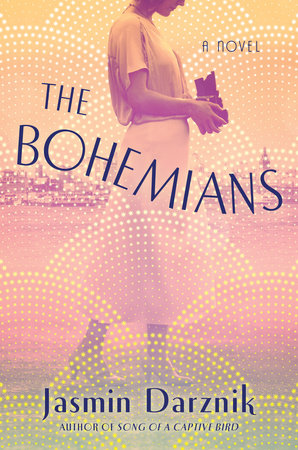
| “One night, a jazz-crazy sixteen year-old San Francisco girl put a pistol to her sleeping mother’s head. . .” Even if you’ve read The Bohemians, you probably don’t remember this line, but it’s one of many true stories embedded in the novel–stories I couldn’t tell at length, but that were just too striking, and in this case too shocking, not to include. Here are the basic facts: In 1925, a San Francisco woman named Anna Ellingson demanded that her teenage daughter stop “running wild at jazz parties.” The teenager, whose name was Dorothy, responded by shooting her, cooly pocketing $45 from her mother’s purse before heading out for yet another night of jazz-fueled debauchery. It’s a strange and gruesome tale, but here’s the part that I just couldn’t shake: at the trial, “jazzmania” was put forth as a defense for the killing.Did people back then really believe jazz could lead a girl to murder? Yes, it turns out. They did. |

| To make sense of the Dorothy Ellingson story, let’s back up and take stock of what jazz represented in 1920s America. The Great War had just ended. Black jazz musicians were migrating from New Orleans to major northern cities such as Chicago and New York. Nearly overnight, Prohibition gave rise to the speakeasy, where the “devil’s music” accompanied drinking and dancing, and people from different genders, races, and social classes mixed freely. To a certain kind of American in the 1920s, jazz was the sound of “the jungles in the dead of night.” It “lured white women” into sex and sin. It was the sound of “civilization” dying—and a new country becoming.”Jazz is the accompaniment of the voodoo dance, stimulating half-crazed barbarians to the vilest of deeds,” proclaimed Ann Shaw Faulkner, president of the General Federation of Women’s Clubs, a powerful alliance of women’s social and reform groups that launched a crusade against jazz in 1921. To its critics, jazz both embodied and amplified the chaos of modern life. Thomas Edison, inventor of the phonograph, ridiculed it, saying it sounded better played backwards. Heavy-handed public rhetoric characterized it as not merely a source of disquiet, but of terror, a menace to both morals and public health. When people danced the Charleston, it was said to resemble an epileptic fit. A Cincinnati home for expectant mothers won an injunction to prevent the construction of a neighboring theater where jazz would be played, convincing a court that the music posed a danger to fetuses. Now, under all the talk of public health and welfare, there was a steady stream of anxiety about both feminism and miscegenation. By the end of the 1920s, at least 60 communities in America had enacted laws prohibiting jazz in public dance halls. But Jazz survived. No, it thrived. Soon you didn’t have to leave home to get your “fix.” Radio and records brought it right to you. And while moralists sought to suppress Jazz and persecute black performers, white performers were helping themselves to the form, further popularizing jazz. |

| Now, back to 1920s San Francisco. In the City, jazz blasted forth from the “black and tan” clubs in the old Barbary Coast, just a stone’s throw from Monkey Block, but even freedom-loving San Francisco had its moral crusaders, folks eager to expunge the city of vices that seemed to multiply under the influence of jazz. The “Jazz Baby Mother Slayer” energized their campaign, leading to raids on the City’s “jazzland” and its habituées. And the jazz-crazy teenager? Even if jazz was understood as critical to her undoing, “jazzmania” didn’t exonerate her. She was found guilty of manslaughter and sentenced to ten years at San Quentin (which held women prisoners until 1932). Dorothy Ellingson’s name is lost to history, as it perhaps should be. But while there was nothing admirable about her in the end, her story spoke to the era’s deepest fears about newly liberated girls and women. Stumbling on the case as I was researching The Bohemians also showed me a glimpse of San Francisco as I never knew it–and still can’t believe it ever was. In the end, isn’t that the power of a good story? Now, before I sign off, let me ask you a question: is there something in The Bohemians that you couldn’t tell was true or not? Write to me about it at jasmindarznik@gmail.com and I will reply back! Get The Bohemians here. |

add a comment
+ COMMENTS